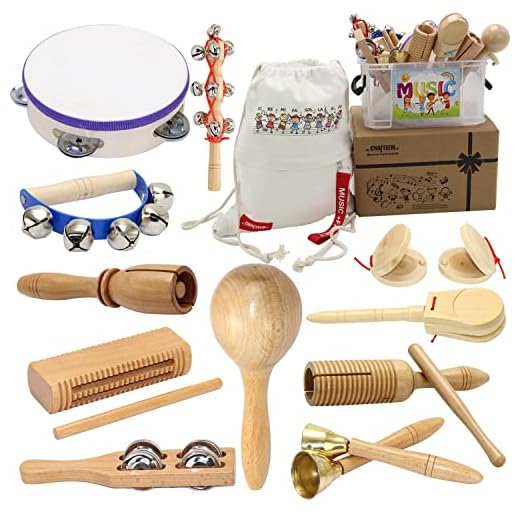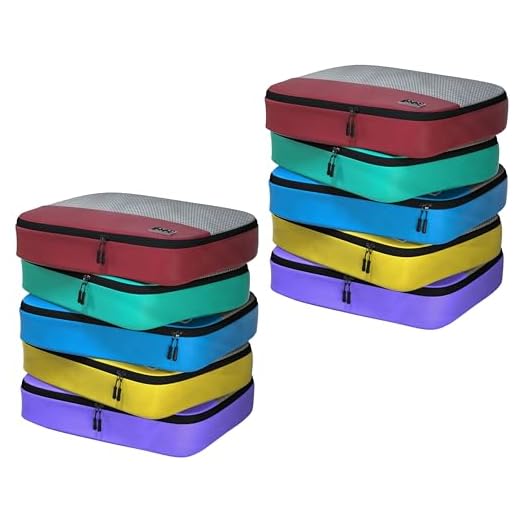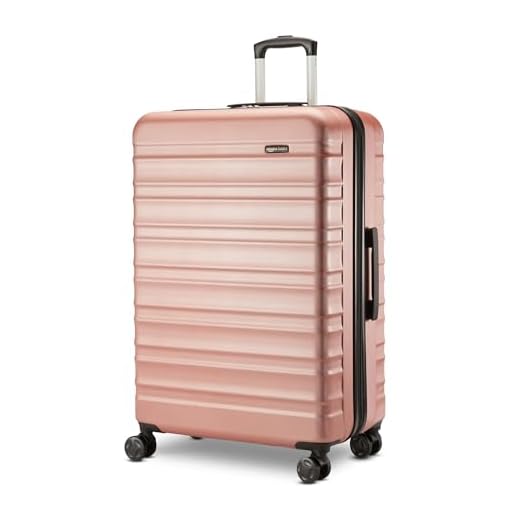





Weight and size: Typical airline rules set 23 kg (50 lb) per piece for economy and 32 kg (70 lb) for premium cabins; manual-handling limits mean ground staff usually will not accept items over 32 kg. The common linear dimension cap is 158 cm (62 in). Low-cost carriers frequently use a single-weight allowance (15–20 kg) or charge per kilogram–verify the carrier’s published allowance before packing.
Dangerous goods and batteries: Spare lithium-ion cells and power banks must travel in the cabin with terminals insulated or in original retail packaging; cells up to 100 Wh are normally allowed, 100–160 Wh require airline approval, and >160 Wh are prohibited on passenger aircraft. Explosives, flammable liquids, corrosives, oxidizers and compressed gases are banned under international dangerous-goods regulations. Aerosols and alcohol are often permitted in limited quantities and subject to alcohol-by-volume limits (containers >70% usually forbidden).
Firearms, sharp items and valuables: Firearms can be transported only when declared, unloaded, locked inside an approved hard case and accompanied by permits; ammunition rules vary by carrier and jurisdiction and usually require secure packaging and declaration. Knives and sporting tools should be packed out of reach of the cabin. Keep cash, passports, jewelry, cameras and other valuables in the cabin to reduce theft or loss risk.
Customs, perishables and import rules: Meat, dairy, fresh fruit, plants and seeds often face strict import controls or bans at destinations; declare agricultural goods and consult destination customs pages ahead of travel to avoid fines or confiscation. Duty-free alcohol and tobacco allowances differ by country and connecting-point regulations can affect carriage rights.
Fees, oversize handling and practical tips: Expect charges for extra pieces, overweight or oversize items; overweight surcharges often apply per kilogram or as fixed fees, and items exceeding handling limits may need freight service. Weigh and measure bags at home, label with contact details, use TSA-approved locks where appropriate, tape battery terminals, declare restricted items in advance and review the carrier’s policy 24–48 hours before departure.
Quick checklist: confirm carrier-specific piece/weight rules, keep spare batteries in cabin, declare firearms and restricted goods, separate valuables from checked pieces, check agricultural import rules and budget for overweight/oversize fees.
Typical airline weight and size limits for checked baggage
Plan for 23 kg (50 lb) and 158 cm (62 in) as the baseline for most international economy tickets; premium cabins often permit 32 kg (70 lb) per piece and occasional additional pieces.
Weight
Two common systems exist: weight-based allowances (typical on long-haul legacy carriers) and piece-based allowances (common on US routes and some international fares). Typical figures: 15–20 kg on many low-cost carriers, 23 kg (50 lb) for standard economy, and 32 kg (70 lb) for business/first. Overweight charges apply above the limit; typical surcharge ranges span roughly USD 50–200 for overweight and climb higher for extreme excess.
Size and measurement
Most airlines use total linear dimensions = length + width + height; the widespread maximum equals 158 cm (62 in). Items exceeding that commonly incur oversized fees (frequently USD 100–400) or require booking as special cargo. Soft-sided bags and packing close to the frame help meet strict dimension caps.
Practical steps: weigh and measure bags at home, redistribute heavy items into permitted carry-on pieces when possible, pre-purchase an extra piece or higher allowance if expecting >32 kg per item, and check carrier-specific charts for exact fee tables before travel.
Prohibited and restricted items in checked baggage and how to declare
Declare firearms, ammunition, compressed gases and lithium batteries at least 48 hours before departure and again at check-in; failure to declare risks seizure, denial of carriage and fines.
Explosives and incendiaries: fireworks, flares, detonators, blasting caps and gunpowder are forbidden for carriage. Do not attempt to pack pyrotechnics in checked baggage.
Flammable liquids and solids: petrol, lighter fuel, paint thinners, solvents and lighter refills must not travel in checked bags. Small aerosol toiletries for personal use are commonly permitted if in manufacturer packaging and within airline-specified quantity limits; if more than a few items, declare.
Gases and pressurised cylinders: butane, propane, oxygen cylinders and SCUBA tanks with pressure require airline approval and usually special documentation; most carriers accept empty, depressurised SCUBA cylinders only with proof of emptiness and valve open. Do not pack full cylinders without explicit carrier clearance.
Lithium batteries and power banks: spare lithium-ion batteries and power banks must not be placed in checked baggage and should be carried in the cabin. Batteries installed in devices may be accepted if devices are switched off and terminals protected. Watt-hour limits: >100 Wh requires airline approval and typically must travel in cabin; >160 Wh are generally forbidden for passenger transport.
Firearms and ammunition: firearms must be unloaded, locked in a hard-sided case, declared at check-in and carried with written airline approval and any required permits. Many airlines limit ammunition to about 5 kg of unprimed ammunition per passenger, correctly boxed; confirm exact kg limit and packaging rules with the carrier before travel.
Corrosives, oxidisers, toxic and infectious materials: acids, bleach, peroxide, radioactive sources, biological samples and poisons are prohibited. Prescription biological samples for medical diagnosis require prior carrier approval and packaging that meets dangerous-goods standards.
Medical equipment and medicines: keep critical medicines and devices in cabin when possible. Portable oxygen concentrators need advance approval and manufacturer documentation. Injectable medications and syringes should be accompanied by a prescription and declared at check-in if packed in checked baggage.
Packing and declaration procedure: notify the airline by phone or email for firearms, ammunition, compressed gases, batteries >100 Wh, portable oxygen concentrators and other special articles at least 48 hours before departure and obtain written approval. At check-in present permits and any manufacturer documentation, complete the carrier’s dangerous-goods form when requested, label items clearly and retain copies of approvals. Tape battery terminals, keep spare batteries in original or insulated packaging, and place firearms and tools in dedicated locked cases.
Oversize and fragile items: large patio umbrellas and heavy cantilever structures frequently exceed checked-bag dimensions and are better shipped as cargo; for compact travel umbrellas and styling guidance see best wind resistant cantilever patio umbrella and best colour combination for sun umbrella. If transporting bulky items in checked baggage, declare size and weight in advance and use reinforced packaging.
Final checklist: declare regulated items before travel, secure written airline approval when required, use approved packaging, label clearly and keep critical batteries and medicines in the cabin whenever feasible.
How must spare lithium batteries, power banks and e-cigarettes be packed for checked baggage?
Keep spare lithium batteries, power banks and e-cigarettes in your carry-on; do not place spare units in checked baggage.
Numeric limits and airline approvals
- Lithium‑ion (rechargeable): spare cells or batteries up to 100 Wh allowed in cabin without airline approval; 100–160 Wh require airline approval and typically max two spare batteries per passenger; >160 Wh prohibited on passenger aircraft.
- Lithium‑metal (non‑rechargeable): spare batteries with lithium content ≤2 g allowed in cabin only; units with >2 g lithium content are forbidden on passenger aircraft.
- Power banks are treated as spare lithium‑ion batteries and follow the Wh limits above.
Packing procedure and handling
- Insulate terminals: cover exposed terminals with tape or use manufacturer terminal caps to prevent short circuits.
- Individual protection: place each spare battery or power bank in its own plastic pouch, original retail packaging, or dedicated battery case; avoid loose batteries in pockets or pouches.
- Device with installed battery: devices may be checked if completely powered off and protected against accidental activation; removable batteries should be removed and carried in cabin.
- Label and calculate Wh when not printed: Wh = Volts (V) × Ampere‑hours (Ah). If only mAh is printed, use Wh = V × (mAh/1000).
- E‑cigarettes and vaporizers: carry in cabin only, power off, do not charge or use onboard; refill cartridges count as liquids and must comply with cabin liquid limits (typically 100 ml per container).
- Declare to airline when carrying batteries 100–160 Wh for approval; keep proof of Wh rating (label or specification sheet) with the battery.
Pack camera spare batteries and power banks following these rules; for compact camera options that travel well, see best digital camera for 250 dollars.
What rules apply to transporting liquids, aerosols and pressurised containers in checked baggage?
Pack liquids and aerosols inside sealed, leakproof plastic bags, cap valves, cushion with absorbent material and place bottles upright in your checked baggage; remove flammable fuels, gas cartridges and toxic sprays unless you have prior airline approval from the dangerous-goods office.
Liquids: no 100‑ml cabin limit applies in checked baggage, but bottles must be secure against leakage. Alcoholic beverages between 24% and 70% ABV are allowed up to 5 L per passenger in unopened retail packaging; drinks below 24% ABV have no specific UN/IATA volume cap (observe airline weight allowances); spirits above 70% ABV are forbidden.
Aerosols: personal-care aerosols (deodorant, hair spray) normally permitted if non‑flammable or limited‑flammability, maximum 0.5 kg (net mass) per aerosol and a combined net quantity not exceeding 2 kg per passenger (IATA guidance). Flammable aerosols for industrial, pesticide or paint use are prohibited.
Pressurised containers: disposable butane/propane cartridges, camping gas and refill cylinders are prohibited in checked baggage. CO2 cartridges fitted inside approved inflatable lifejackets or other equipment are acceptable when installed for use; spare or loose cartridges usually prohibited. Small medical cylinders and bottled oxygen require airline approval and documentation; most airlines will not accept oxygen cylinders in checked baggage.
Packing and declaration tips: use original caps and add tape over valves, place items in double sealed bags, surround with absorbent packing, isolate aerosols from sharp objects and electronics. If transporting larger quantities of toiletries, medical aerosols, alcoholic products close to limits or items with dangerous‑goods labels, contact the airline’s dangerous‑goods office before travel and declare at check‑in.
| Item | Permitted in checked baggage? | Limits / packing requirement | Notes |
|---|---|---|---|
| Toiletry liquids (shampoo, lotion, perfume) | Yes | No 100‑ml cabin limit; secure caps, sealed bags | Perfumes are flammable–pack carefully |
| Alcoholic beverages (24–70% ABV) | Yes | Up to 5 L per person in unopened retail packaging | Weight allowances still apply |
| Alcoholic beverages (>70% ABV) | No | Prohibited | High‑proof spirits not accepted |
| Personal‑care aerosols (deodorant, hair spray) | Yes | Max 0.5 kg per container; combined net ≤2 kg | Valve protection required |
| Flammable/industrial aerosols (spray paint, insecticide) | No | Prohibited | Consider shipping via freight with hazardous‑goods documentation |
| Butane/propane fuel cartridges | No | Prohibited | Some airlines allow empty, disposable lighters in checked baggage; fuel cells are not allowed |
| CO2 cartridges | Only when installed | Allowed if fitted in approved equipment; spare cartridges usually prohibited | Check manufacturer and airline guidance |
| Medical oxygen cylinders | Restricted | Airline approval and paperwork required; rarely accepted in checked baggage | Portable oxygen concentrators preferred with airline consent |
How to book, pack and pay for oversized sports equipment, musical instruments and bulky items?
Book oversized items at least 48–72 hours before departure through the airline’s special-baggage portal or by phone; pre-booking typically saves 20–50% versus airport payment and avoids refusal at check-in.
Booking and fees
Measure length × width × height and weigh packed items before booking. Common charge bands: small oversize (up to 23–32 kg and one linear metre) US$50–100; large oversize (32–45 kg or 1–2 linear metres) US$100–250; extra-large or surfboards/bikes US$150–400 or more. Overweight beyond 32 kg often triggers cargo consignment and higher handling fees. Airlines sometimes sell a dedicated “sports” supplement or a flat sports fee – check the exact product name on the carrier website.
Options and costs for musical instruments: if instrument fits cabin dimensions it can be carried on free or for a regular carry-on allowance; if it requires a separate seat, expect to pay 75–100% of one passenger fare for the extra seat; some carriers permit instrument as checked special item for a sports fee (US$75–300). Very large items should be routed via airline cargo or freight forwarder – request a cargo quote and book at least one week ahead.
Payment methods: online prepayment with card is fastest. Airport counters accept card and cash but surcharge and processing delays are common. For multiple or commercial shipments, request a pro forma invoice and pay by bank transfer to secure space.
Packing and handling
Use rigid flight cases or ATA/road cases for fragile gear; soft padded bags acceptable only for items that will be carried in cabin or under special airline allowances. Internals: dense foam cut to shape, anti-shock inserts, strap items to frame, pad protruding parts. For bicycles: remove pedals, rotate or remove handlebars, deflate tyres to ~30% pressure, secure fork and chain, wrap frame in foam. For skis/snowboards: use a well-padded board/bag, separate poles, secure bindings. For surfboards: use a padded board bag with nose and tail protection, remove or secure fins and leash.
String and wood instruments: use a hard case with foam support; slightly loosen strings to reduce neck tension during pressure changes; include a case humidifier for multi-day travel through dry climates. For brass and wind instruments remove mouthpieces, place in padded pocket, and secure valves/slides. Take photos of serial numbers and condition before travel for claims.
Label cases with name, phone and flight details; affix “FRAGILE” and “THIS SIDE UP” stickers where appropriate and secure all zips and clasps with zip-ties or tamper-evident seals. At airport, declare oversized items at the special-baggage or oversize counter and obtain a tag and receipt showing declared weight, dimensions and any declared value.
Insurance and liability: airline liability for damaged/checked items follows the Montreal Convention limit (typically ~1,288 SDR per passenger, exchange-rate dependent). For high-value instruments or specialist kit purchase transit insurance or declare a higher value with the carrier where offered; keep original purchase receipts and serial numbers for claims.
Timing and drop-off: arrive 45–90 minutes earlier than standard check-in for domestic flights and 90–150 minutes for international routes if transporting oversized gear; some airports operate separate oversize counters with different cut-offs. If carrier advises cargo shipment, follow the cargo arrival windows printed on the booking confirmation.
FAQ:
What weight and size limits usually apply to hold luggage on commercial flights?
Most airlines use either a piece concept or a weight concept. Under the piece concept, each checked bag must not exceed a specified weight (commonly 23 kg for economy and 32 kg for premium classes) and a linear dimension limit (sum of length + width + height, often around 158 cm). Under the weight concept, passengers get a total baggage allowance (for example 20–30 kg) to split across bags. Low-cost carriers often set smaller limits and charge for each checked item. If a bag exceeds the permitted weight or size, fees for excess or oversized baggage will apply, and very heavy or oversized items may require advance booking or separate cargo arrangements. Always check the exact limits printed on your ticket or the carrier’s website before you pack.
Which items are prohibited in hold luggage and which need special handling?
Prohibited items typically include explosives and any flammable materials, compressed gas cylinders, corrosive substances, and other dangerous goods listed by aviation authorities. Spare lithium batteries and portable power banks are usually not allowed in checked baggage; they must travel in the cabin or follow strict packing rules. Firearms and ammunition can sometimes be transported in the hold but only if declared, unloaded, packed to airline and legal standards, and accompanied by the correct permits. Some sharp objects and tools may be permitted if sheathed or packaged safely. Perishable food, large quantities of liquids, and certain agricultural products may be restricted depending on the destination country’s customs rules. Check both your airline’s dangerous-goods guidance and the import rules of the country you are flying to.
Can I put my laptop, phone, or spare batteries in checked luggage?
Laptops and phones with installed batteries are generally allowed in checked baggage, but most carriers and regulators recommend carrying them in the cabin because batteries can overheat and any fault is safer to manage where crew can respond. Spare lithium-ion batteries and power banks are almost always forbidden in checked baggage and must be carried in the cabin, protected against short circuits (tape terminals or keep them in original packaging), and usually limited by watt-hour rating. As a rule of thumb: devices with batteries installed may go either place per airline policy, but spare cells and power banks should stay with you in the cabin. For high-capacity batteries (over about 100 Wh) airline approval is often required; above a higher threshold they may be banned entirely.
What should I do if my checked bag is overweight or I need to transport a bicycle or large sports gear?
If a bag is overweight at check-in you can often pay an excess-baggage fee or redistribute items into another paid bag. Very heavy items (for example above 32 kg) may be refused for handling reasons. For large items such as bicycles, surfboards, skis or musical instruments, many airlines treat them as special or oversized baggage with separate fees and packing rules (hard cases, deflated tires, or removed pedals for bikes, for example). Some carriers require advance notice or a separate booking for sports equipment; others offer specific allowances. If fees or restrictions are unsuitable, consider shipping the item via a specialist carrier or freight service. Before departure, read the airline’s special-baggage page and, when applicable, reserve the carriage for that item to avoid surprises at the airport.







